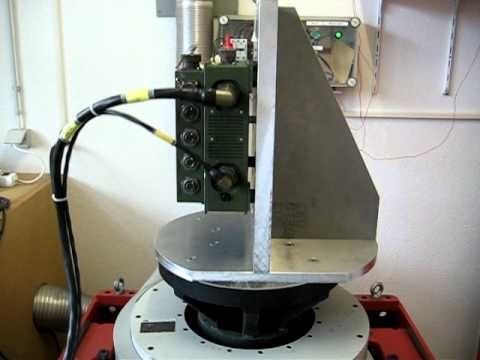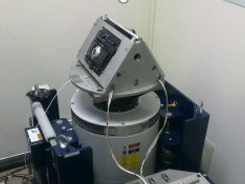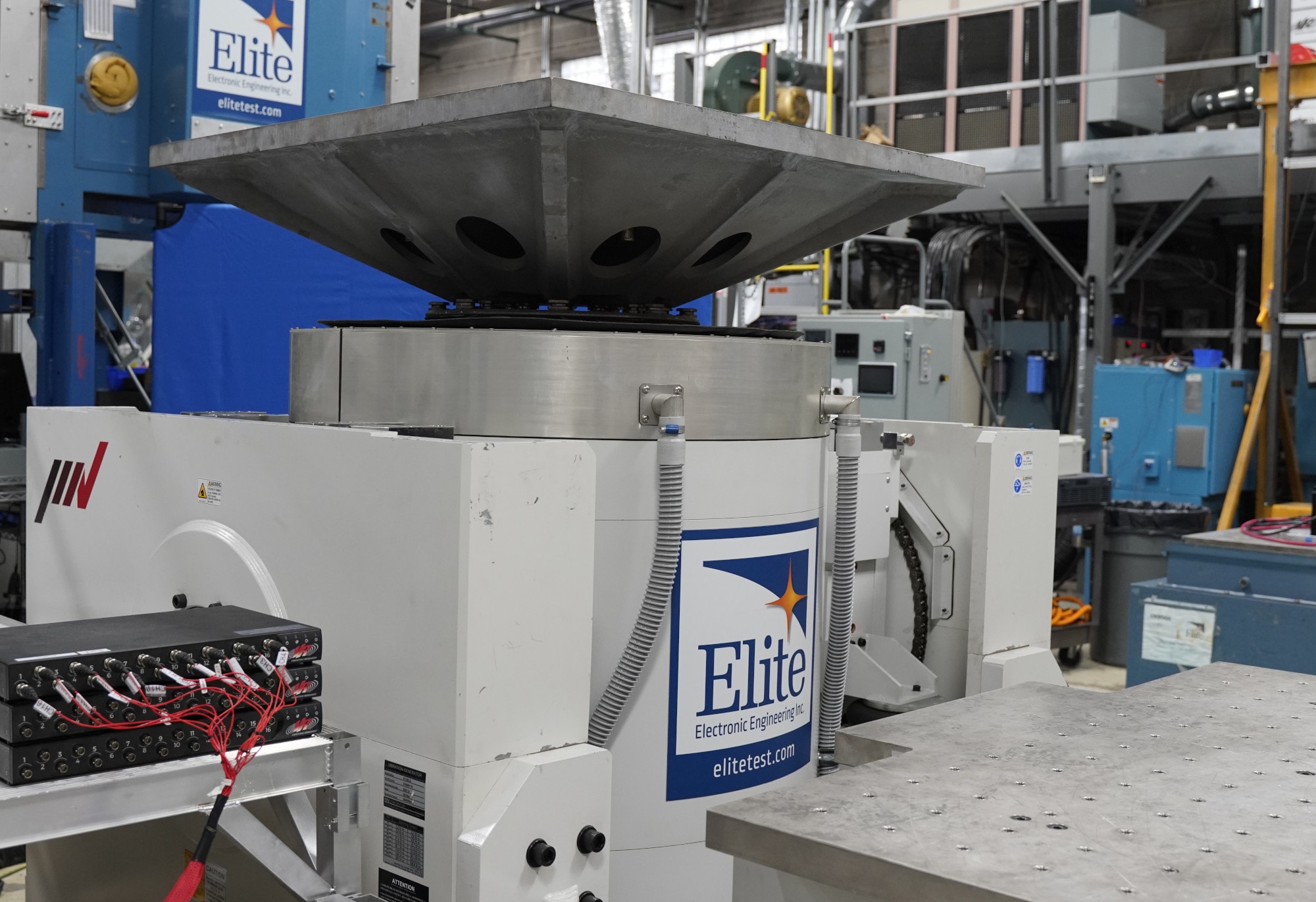What is a Shaker Fixture?
For vibration testing, engineers often use a specialized fixture to attach a structure to a shaker tabletop in the orientation of the structure’s end-use environment.
For example, a shaker should vibrate in the vertical direction to test a military vehicle computer with road-like vibrations. With a shaker fixture, the test engineer was able to mount the rugged computer to the fixture in a vertical orientation (Figure 1). If the computer was simply laid on the shaker table, the direction of the vibration test would be perpendicular to real-world operation.

Figure 1. A rugged military vehicle computer mounted on a fixture in the orientation of its end-use environment.

Figure 2. An auto head unit mounted on a shaker.
Another example is car electronics. The instrument panel, audio controls, and navigation system (the head unit) must be attached to the shaker in the same orientation, including tilt, as in the vehicle (Figure 2). This principle holds for any device under test (DUT).
Shaker Fixture Design
 A well-designed fixture attaches the DUT in the proper orientation without affecting the vibration driven by the shaker system. The fixture must not have any resonances within the test frequency range nor should it damp the vibration energy at any point in the frequency range.
A well-designed fixture attaches the DUT in the proper orientation without affecting the vibration driven by the shaker system. The fixture must not have any resonances within the test frequency range nor should it damp the vibration energy at any point in the frequency range.
Beyond generating a realistic test, a good shaker fixture design also leads to efficient and consistent testing. A test engineer can readily remove one DUT unit and replace it with another unit in the same orientation. This makes it easy to duplicate the test and confirm the results.
Additionally, the fixture must be designed and constructed so it is not damaged during testing. However, this reliability cannot be achieved by over-engineering a massive fixture. Additional mass causes the shaker to work harder and limits its responsiveness to changing control signals.
Finally, a fixture must not have any motion of its own in any axis so as not to disrupt testing. The fixture must be firmly mounted to the shaker table and should not have any parts free to move or vibrate.
Summary
A well-designed shaker fixture has the following characteristics:
-
- Mounts the DUT to the shaker system in the orientation of end-use
- Transmits the forces from the shaker to the DUT without resonances or interference
- Serves to quickly mount and test multiple samples of the DUT
- Has minimal mass so the shaker can function with minimal force
- Performs many tests without sustaining damage
- Does not have any independent motion in any axis
